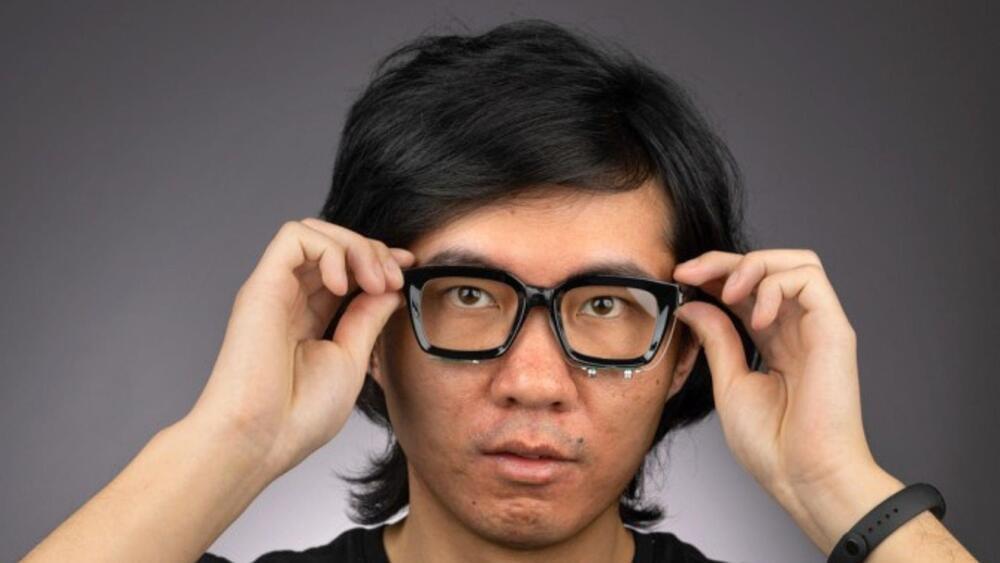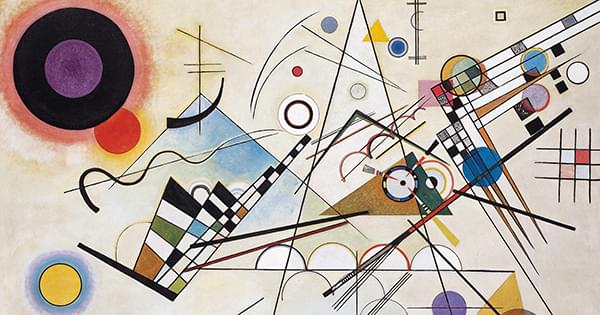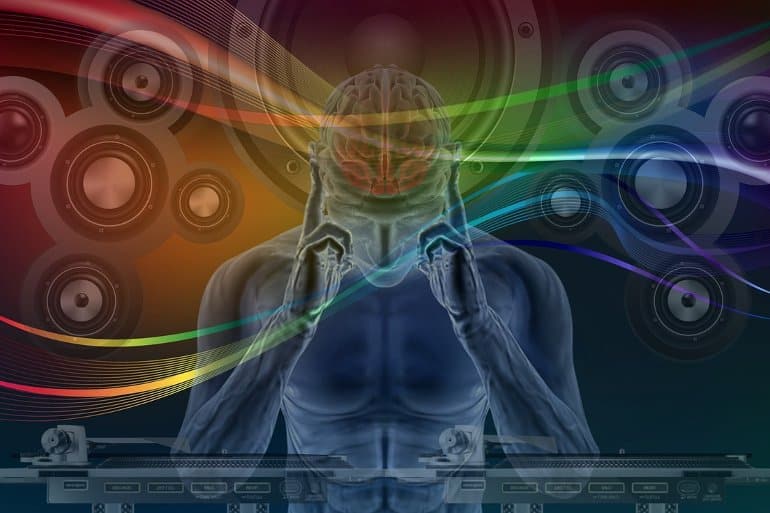Update it to get the best YouTube experience and our latest features. Learn more.
Category: media & arts – Page 69
Last Stand | Sci-Fi Short Film Made with Artificial Intelligence
Disclaimed: None of it is real. It’s just a movie, made mostly with AI, which took care of writing the script, creating the concept art, generating all the voices, and participating in some creative decisions. The AI-generated voices used in this film do not reflect the opinions and thoughts of their original owners. This short film was created as a demonstration to showcase the potential of AI in filmmaking.
#AI #Filmmaking #Aliens #Movies #ScienceFiction #SciFi #Films

Breaking the silence: Cornell researchers build sonar glasses for communication without words
Communication without boundaries. “We’re moving sonar onto the body.”
Cornell University researchers have developed a new technology allowing silent communication through sonar glasses. The glasses use tiny microphones and speakers to read the words that are silently mouthed by the wearer, allowing them to perform various tasks without needing physical input. The technology was developed by Ruidong Zhang, a Ph.D. student at Cornell, and builds off of a similar project that used a wireless earbud and previous models that relied on cameras.
Highly-Accurate Design.
The glasses are designed to be unobtrusive and not require the user to face a camera or wear an earbud.
Cornell University.
One of the most exciting prospects for this technology is for individuals with speech disabilities to use it to silently feed dialogue into a voice synthesizer, which would then speak the words aloud. The glasses could also be used to control music playback controls in a quiet library or to dictate a message at a loud concert where standard options would fail.


AI-generated music ‘inferior to human-composed’ work, finds study
Artificial intelligence has become the world’s latest buzzword. And experts have been busy demonstrating its capabilities in virtually every field, including music. And it appears that AI did not fare well in the generation of music.
They recruited 50 participants for this study who have a strong understanding of music, particularly musical notes and other essential components.
Puhimec/iStock.
According to the University of York study, AI-generated music is “inferior to human-composed music.”

Hear, Hear! How Music and Sound Soothes and Connects Us
Summary: Researchers explore how sounds and music have the power to soothe, energize, and connect us to one another.
Source: USC
When Ludwig van Beethoven began losing his hearing as a young man in 1,798, he blamed it on a fall, though modern researchers believe illness, lead poisoning or a middle ear deformity could have been factors.

The quantum revolution: Brain waves
Presented by Madhumita Murgia and John Thornhill, produced by Josh Gabert-Doyon and Edwin Lane. Executive producer is Manuela Saragosa. Sound design by Breen Turner and Samantha Giovinco. Original music by Metaphor Music. The FT’s head of audio is Cheryl Brumley. Special thanks to The Hospital for Sick Children.
We’re keen to hear more from our listeners about this show and want to know what you’d like to hear more of, so we’re running a survey which you can find at ft.com/techtonicsurvey. It takes about 10 minutes to complete and you will be in with a chance to win a pair of Bose QuietComfort earbuds.
I Used AI To Make A Game (ZERO Coding Experience)
Here’s a breakdown of how I used AI to make a video game.
Here’s the game: https://mreflow.com/jump-game/
🛠️ Explore hundreds of AI Tools: https://futuretools.io/
📰 Weekly Newsletter: https://www.futuretools.io/newsletter.
😊 Discord Community: https://futuretools.io/discord.
🐤 Follow me on Twitter: https://twitter.com/mreflow.
🐺 My personal blog: https://mattwolfe.com/
🌯 Buy me a burrito: https://ko-fi.com/mattwolfe.
🍭 My Backgrounds: https://www.futuretools.io/desktop-backgrounds.
Outro music generated by Mubert https://mubert.com/render.
#AIGame #gamedev #gpt4
Artificial Intelligence: The Ethics and the Future of Humanity
Progress is speeding up even as the world barrels toward one of innumerable disasters. What lies ahead, and what should we do when we get there? In the best-case scenario, we may still have control over our direction.
BECOME A PATRON: https://www.patreon.com/TonyTalksBack
Or, make a one-time donation here: https://paypal.me/TonyTalksBack
Follow on social media for updates on new content and releases:
https://www.facebook.com/TonyTalksBack/
https://twitter.com/TonyTalksBack.
All photos made with Wonder AI:
https://www.wonder-ai.com/
Music credits:
“Half Mystery” Kevin MacLeod (incompetech.com)
Licensed under Creative Commons: By Attribution 4.0 License.
http://creativecommons.org/licenses/by/4.
“Hypnothis” Kevin MacLeod (incompetech.com)
This New A.I Will CHANGE VFX Forever!
This AI tool automatically animates, lights, and composes CG characters into a live-action scene. No complicated 3D software, no expensive production hardware—all you need is a camera.
Wonder Dynamics: https://wonderdynamics.com.
Blender Addons: https://bit.ly/3jbu8s7
Join Weekly Newsletter: https://bit.ly/3lpfvSm.
Patreon: https://www.patreon.com/asknk.
Discord: https://discord.gg/G2kmTjUFGm.
██████ Assets & Resources ████████████
Blender Addons: https://bit.ly/3jbu8s7
FlippedNormals Deals: https://flippednormals.com/ref/anselemnkoro/
FiberShop — Realtime Hair Tool: https://tinyurl.com/2hd2t5v.
GET Character Creator 4 — https://bit.ly/3b16Wcw.
Humble Bundles: https://www.humblebundle.com/membership?refc=F0hxTa.
Get Humble Bundle Deals: https://www.humblebundle.com/?partner=asknk.
GET Axyz Anima: https://bit.ly/2GyXz73
Learn More with Domestica: http://bit.ly/3EQanB5
GET ICLONE 8 — https://bit.ly/38QDfbb.
Unity3D Asset Bundles: https://bit.ly/384jRuy.
Cube Brush Deals: https://cubebrush.co/marketplace?on_sale=true&ref=anselemnkoro.
Motion VFX: https://motionvfx.sjv.io/5b6q03
Action VFX Elements: https://www.actionvfx.com/?ref=anselemnkoro.
WonderShare Tools: http://bit.ly/3Os3Rnp.
Sketchfab: https://bit.ly/331Y8hq.
███████ Blender Premium Tutorials █████████
Blender Tutorials #1: https://bit.ly/3nbfTEu.
Blender Tutorials #2: https://tinyurl.com/yeyrkreh.
Learn HardSurface In Blender: https://blendermarket.com/creators/blenderbros?ref=110
Learn to Animate in Blender: https://bit.ly/3A1NWac.
Cinematic Lighting In Blender: https://blendermarket.com/products/cinematic-lighting-in-blender?ref=110
Post Pro: https://blendermarket.com/products/postpro-?ref=110
███████ Extras ██████████████████